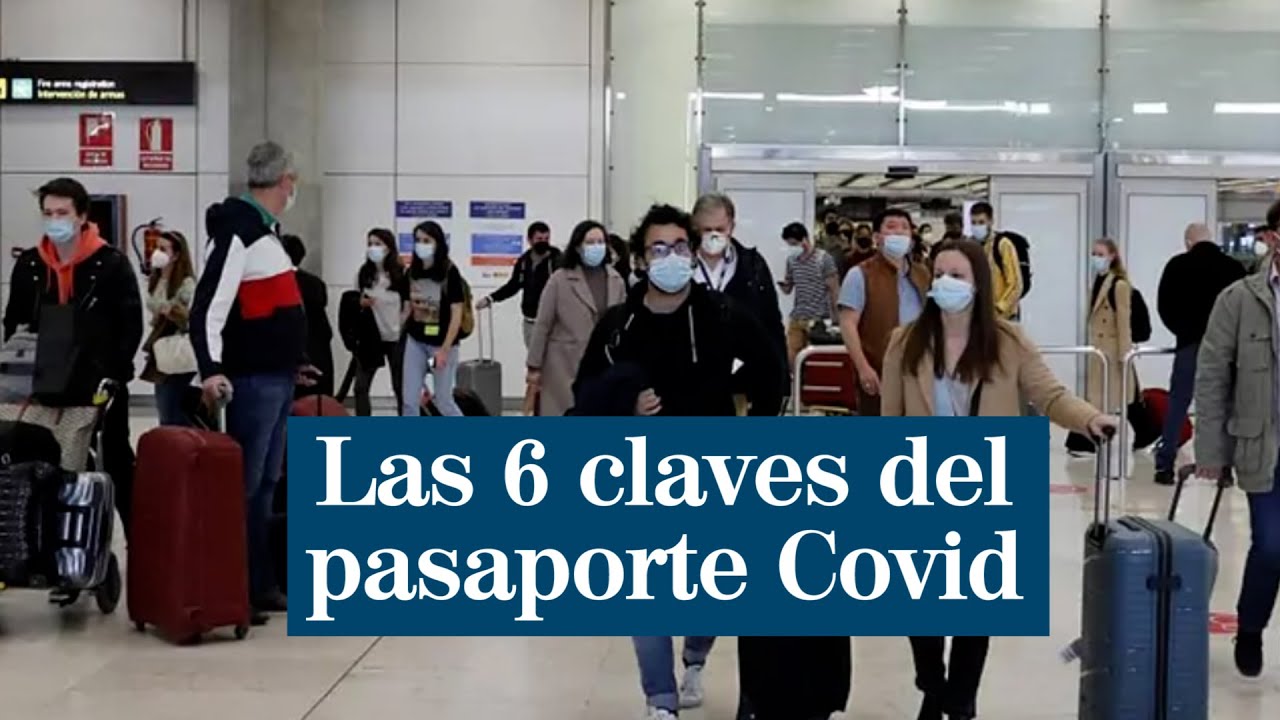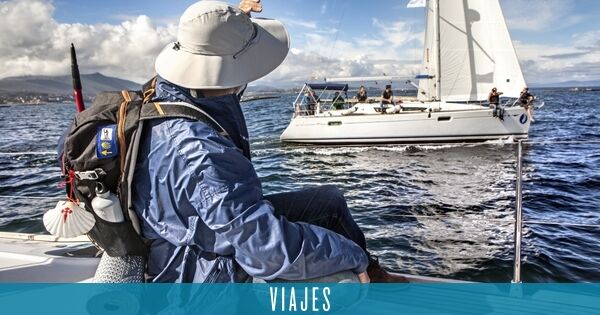
Pilgrims on foot or at full sail: this is the new official Way to Santiago that can be done in three days
Update
Saturday,
22
may
2021
–
00:57
The Way through the ra Muros-Noia is already an official Jacobean route and, therefore, an alternative for the pilgrim in this Holy Year. It can be done for five days on board a sailboat or three days on foot, but without losing sight of the water.
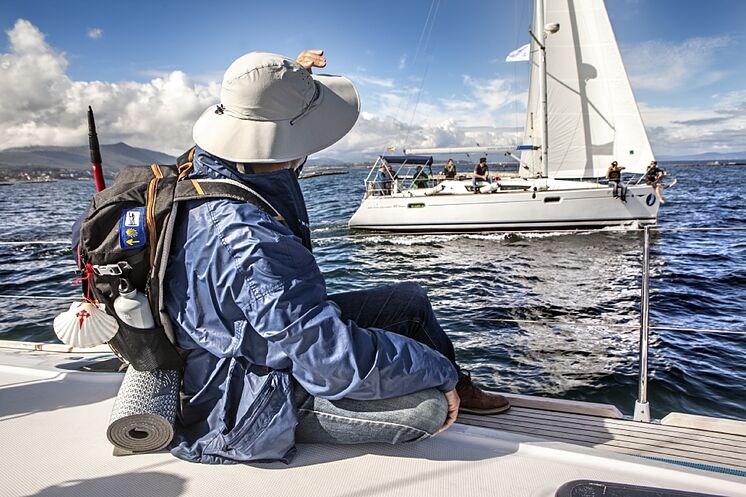
A pilgrim aboard a sailboat to Santiago.
MICHELLE BARRETT
There’s a new route to the city of Apstol. It is as old, as historical and as documented as the well-known Camino Francs or La Va de la Plata. But this tastes like salt. It is an itinerary through the best preserved coastal contour of the Low Ras, which last December achieved the desired blessing that was missing: the approval of the cathedral chapter to be part of the Official Jacobean Route.
“It is the official recognition of the condition of pilgrim to all people who make this route and who will have, therefore, the right to obtaining the Compostela (the credential issued by the Church), in equal conditions than the rest of itineraries”, explains Sebastin Valverde, manager of the new Camino de Santiago de la ra Muros Noia, the way that is born in the sea.
It is also the first time in the history of modern pilgrimages that it is recognized a distance of less than 100 kilometres to get to the city of Apstol. “Indeed, we are facing a short route. The fastest to Santiago-about 89 kilometers from Muros -“, explains Valverde. So much so that the new Path can be done in three or four days without being too used to walking. “Except about seven kilometers of ascent that you find leaving Noia is also a very flat route that does not require great physical gifts”.
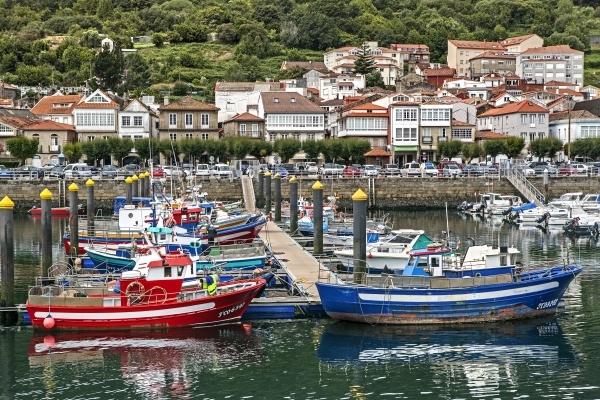
Although what makes this tour truly unique is sea, to be our companion for many kilometers of adventure. Other routes are linked to the coast but immediately lie inland. “In this, the middle of the route, exactly the first forty kilometers, pass by overlooking the sea or next to it. Which means that when you stop to rest you can take a bath or do some nutritional activity”.
That regardless of whether one chooses as the starting point of this Path the port of Muros or Port of Son, that is to say to walk along one or the other bank of the ra. Both paths meet in the beautiful medieval village of Girl stop already from ah heading to Santiago.
Cross nut
The Road continues to demand sacrifice, but there is no lack of more recreational options. And the ra of Muros Noia is the protagonist of one of them, which consists of making the pilgrimage on board a sailboat, a maritime itinerary that emulates that centuries ago made the Apstol Santiago.
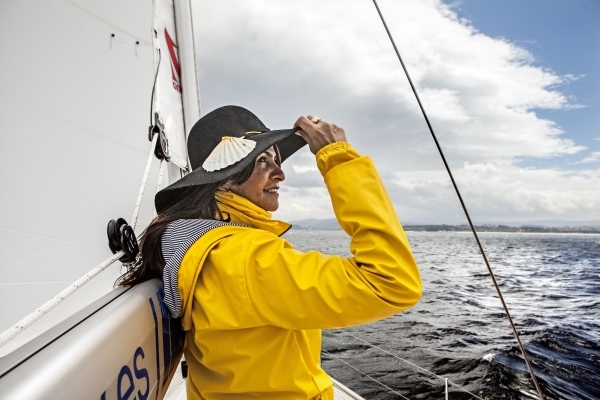
In this way, the trip becomes an experience of five days, four of them sailing and the last kilometers walking until reaching the Galician capital. “A route for which you do not need boat or previous experience because you go with a professional skipper,” explains Mara Pintos, booking manager of Sailway, the boat rental company that markets this tourist product.
We don’t have to take engao. “You can play calm chicha and watch sunset quietly, and you can touch a storm and the waves pass you inside the boat as it has happened to us. Sailing for many hours is tense.” The good thing is that, as a rule, the Ces islands act as a natural barrier of the ra of Vigo; those of Ons, of the ra of Pontevedra and the island of Slvora of that of Arousa.
Departing from the port of Bayonne and arriving at Portosn, the crossing will dock in all the ports of the Low Ras until reaching the Muros-Noia. During the adventure it is anchored in front of the idyllic islands of the P. N. Martimo Terrestre of the Atlantic Islands of Galicia and it stops at emblematic ports such as Sanxenxo or San Vicente do Mar (O Grove).
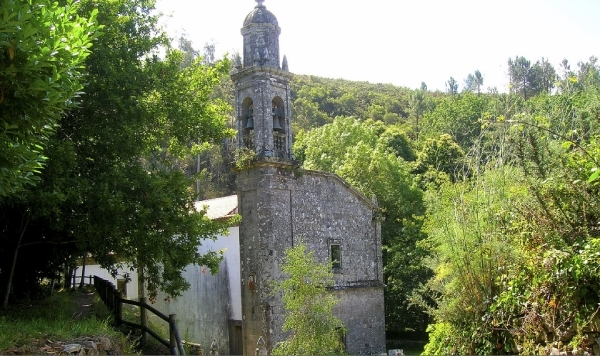
As Pintos explains, ” it is mandatory to at least 90 nutritional miles to obtain the Compostela and it is necessary to seal it in each port that marks the route”. To complete the Path, in addition, you have to do on foot at least the last seven kilometers of the Portuguese Way from the village of Milladoiro and seal the credential in the chapel that gives it its name and, of course, in the Pilgrim’s office once in Santiago.
The crossing requires a minimum of four people and is done both for private groups and on certain dates for anyone who is encouraged (from 800 euros/person). The next departures are in June and again in September and October. “It is an elitist product, for people who like to sail”, aade Valverde.
The milestones of the Way
Those who choose the dust of the road instead of the waves will also have many other rewards. For example, crossing on foot Nafonso Bridge, in the estuary of the Tambre, a medieval bridge of eighteen arches that is one of the most spectacular places of the entire itinerary.
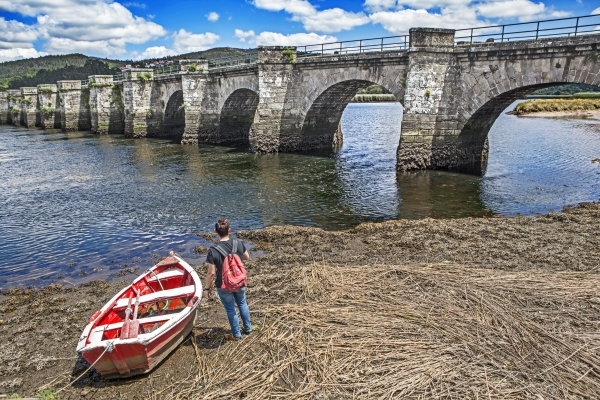
With the boots on you also enjoy better another of the great scenic attractions (besides the ra): the large spots of deciduous forest that these days of Spring and until the end of June are in their maximum splendor. Here the pilgrim will have to overcome countless regattos, waterfalls and natural pools where you can also take advantage to rest and refresh. And almost halfway there is not to miss the monastery of Toxosoutos, at the foot of the Ro San Xusto that runs in that place and offers a unique show.
You can not fail to mention the two villas that give name to this route. Muros has become the marina with the largest number of yachts, sailboats, boats or catamarans in transit in Galicia. It remains the paradigmatic example of galician coastal villas with its beautiful arcades and alleys on the edge of the sea. Noia is equally important. It also has a collection of more than 500 medieval plaques with funerary inscriptions and reliefs. One very reseach is that of a pilgrim who never arrived in Santiago.
On foot or by bike
Part of the creation of this forgotten Path has been, how not, to delimit the route that with more security and in a more verosmil way could connect the coastal towns with Santiago de Compostela. “The historic route, like all roads, has a part that runs along paved roads, but we are working to define a parallel route that goes one hundred percent by dirt roads”, explains the route expert, who also plans to generate a route in BTT and even of canicross for those who want to go accompanied by their dog.
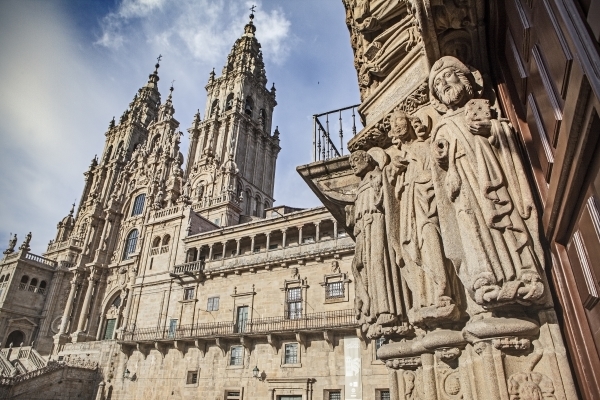
All that remains is for the pilgrims to come. “Internally, there is a moment of effervescence. Now that the road has been achieved the people of the territory are starting to walk”, says Valverde. How many pilgrims do we expect? “That’s an unknown. The Roads of Santiago have remained practically to zero. The blow is similar to that suffered by the coastal destinations that live from the international market”. One factor in favor is that the Vatican has extended the Holy Year to 2022. One more incentive for the faithful to reach the Obradoiro.
/ More information en riademurosnoia.com and in www.ariadaestrela.com
According to the criteria of
The Trust Projectslearn Moresee links of interest








